NUTRICION
In the Classical Rett syndrome one of the main problems is: nutrition. It it is connected with:
-
- poor absorption of the food in the digestive system
- heavy motor problems of chewing and swallowing food
- absence of the physical activity
So far, research of the Rett syndrome has shown it can affect digestion. Consequently,the following are serious problems of this syndrome: poor absorption
of nutritional ingredients and constipation; in most cases Rett girls remain short in stature and very skinny, with reduced muscle mass and
without subcutaneous fatty tissue; they are tired and sleepy with low concentration span.
It was thought for a long time that these consequences were a direct result of this disorder. However, skinniness (underfed condition) and
short stature do not count as its standard symptoms any more, since it has been found that it can be treated with a special system of
nutrition and various diets. It has been also found that with Rett syndrome the absorption of nutritional substances in intestines is
deranged and that a great deal of useful ingredients is irretrievably lost during digestion. Of course, there are exceptions from the rule,
but in most cases the underfed condition is visible although a child constantly eats. In some other cases, a child is not capable of
chewing food, and therefore eats less than she could, or she accepts only well minced meals which, due to a mincing process, contain less
vitamins, minerals, proteins and carbon hydrates.
To avoid these problems we started from the very beginning to take care about:
In shops, we can also find supplements which represent concentrated doses of vitamin C (we use it too), or increased doses of vitamin B, among which B6 and B12 have particularly important role in functioning of nerve cells and conducting of information through neurons. If you want to buy vitamin C (ascorbic acid) you can better buy it in a form of Sodium Ascorbate. Mineral salts of ascorbic acid (mineral ascorbates) are buffered and therefore less acidic. Thus, mineral ascorbates are often recommended to people who experience gastrointestinal problems (abdominal pain or diarrhea). Vitamin C (Sodium Ascorbate) is less irritating to the gastrointestinal tract. When mineral salts of ascorbic acid are taken, both the ascorbic acid and the mineral appear to be well-absorbed.We had lots of trouble to find it. Eventually, we have got it from England. It is specially made for children and is used to improve immunity of the children who often have cold, flu and other illnesses. If an organism accepts this vitamin well, a child can pass the whole winter without a single cold. It is also important to say that vitamin C should not be used in tablets, but in drops added to a glass of fruit juice, as it is more favorable for the mucous membrane of the stomach when used dissolved.
Some of the supplements contain concentration of different plant and fish Omega 3 oil, (also very important for the brain functioning), and can be found in combination with several minerals and vitamins which complements each other during the absorption. The supplements are very useful, but one must be VERY CAREFUL since this sort of tablet "food" became a very effective business of many companies and a way how to make a easy profit. Therefore, we can also find on the market some supplements which do not consist of what is written on the box, so they are not efficient, but there are also those consisting of some synthetic substances and aromas, and they are HARMFUL!!! As a rule, a good supplement is always expensive and that is what makes it different from those cheap; commercial; variants. Knowing that, my advice is to choose them in consultation with your dietitian and buy them at the pharmacy or through Internet, directly from the manufacturer who can guarantee the quality. By no means should you buy them through middlemen, or through dealers in private shops. The child's health is in question and no one should take a risk and calculate with a price.
The manufacturer I would particularly recommend is Kirkman's Lab in USA, and I think they have recently opened a European wing in England. You can find their website at: kirkmanlabs
We have been ordering supplements from them for three years and they have been of a good quality, tasty and specially made for CHILDREN of different needs. Most of them consist of natural fruit additives, or they are tasteless, so that children can accept them easier than common vitamin tablets or powder made for adults.
What we are using at the moment is a liquid supplement with all necessary vitamins and MINERALS for a daily use, in respective doses (percentages). We are also using fish oil – particularly MCT preparation, but instead, it would be sufficient for a child to eat one of fatty fish (sardine, tuna, salmon) as a complete meal, at least three times a week and in regular intervals. Dejana also gets Calma C supplement that contains: calcium, magnesium and vitamin C. This product was recommended by BIBIC because it is well known that the bones of girls with Classical Rett syndrome are weak and have deficit of calcium. This mineral is often combined with magnesium because it is better absorbed in this way. Here are Dejana's daily supplements:
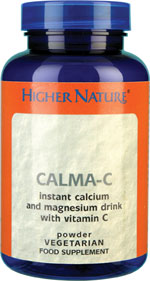
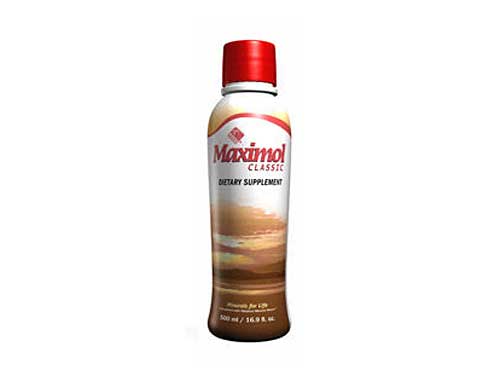

In addition to this, Rett girls are often given L-carnitine, a supplement which has an influence on better concentration, energy level and heart functioning, but we have not noticed any significant improvement with our daughter, so we stopped using it in the very beginning. However, some parents have noticed a small progress, and because Rett children are different as anybody else, the components of supplements can have different effects on them.
In the beginning, we also tried a tablets with higher concentration of B6+B12+magnesium. Vitamins B has been always produced in combination with magnesium, because that is how they bind in the organism, since magnesium helps better absorption of B12. It seemd to us that it caped her energy level very well and it helped her do all the activities during the day much easier. But we stopped with it at some time as she become stronger and activer on her own.
Some Rett girls are getting Q10. But the benefits of it are very individual. What is in general important with the supplements is: that they do NOT contain artificial aromas, additives with E-numbers, and that their make is based on natural materials (although today it is difficult to avoid it even in ordinary food). You can inform about it all by the manufacture, on the forums, or by dietitians and of course you may always check ingredients before using them.
HOW TO CHOOSE A SUPPLEMENT?
The best thing is to address a experienced nutritionist first and talk to him about everything: ask him about the quality of supplements, about their effects, combination and brand. In addition to seeing a doctor, it is not a bad thing to do the blood test to allergy on food, and it is advisory to investigate which nutritional ingredients your child lacks and whether she has got too much of some oxidants (adverse to organism). We did an allergy test first and found Dejana was not allergic to any substance in food. Then we ran the additional test to heavy metals (poisonous and undesirable in organism) at the Great Plains Laboratory in the USA. Upon your request, they send you all necessary test material, and after some time they send you the list of complete analyses in writing, which you can bring to your physician. We did the test on the hair tuft sample, and we received the results by which our daughter had all the vitamins and minerals just UNDER the bottom level (minimum) necessary for the organism: that means insufficient quantity, and that is probably why the vitamin supplement with minerals has suited her fine. Hereunder, you will find more about the test: greatplainslaboratory
You can find something more about it all on the following website: greatplains_test
On the following address, you can choose and order (urine, blood, hair analysis): greatplains_ordertest
Upon establishing what your child lacks in nutrition and which supplements are of a good quality, your choice will not be difficult. I would also like to add that you should avoid hormone based supplements. There are doctors who prescribe to extremely weak Rett syndrome children with thin legs and arms, various kinds of anabolic steroids to make muscles grow. However, I would never accept to use such means, because hormones are not researched extensively and nobody knows what the consequences are after having been affected. There are even reports which say some of the steroids are cancerous (those used as a doping in a sport). That is why everything that is made naturally, without synthetic substances, without additives and artificial aromas, and without affecting hormones, is always the SAFEST for the use and for the supplement to food.
One tip: I will recommend to all parents to use possibilities of Internet to get better over view on the supplements that are used world wide in the Rett society and to get insight in the new products. Internet can also help parents to come in contact with each other and to exchange the experience about things that work or do not work. It is important to do that for two reasons:
NATURAL FOOD
We have been on a special diet which understands food: fully without sugar, additives, artificial colors and preservatives. That means without E-numbers.
Since every packaging bears the composition of a product, then it is not difficult to choose food and juices without the above said substances. In the Netherlands it is not a problem to keep such a diet, as there are special shops of Healthy Food whose articles do not consist of E-numbers at all, and one can even buy tasty biscuits and cakes without a trace of sugar. If there are no such shops, one can find nice recipes for the cakes based on RICE SYRUP, or fruit sweets, without adding sugar and artificial aromas/colors in dough and fill.

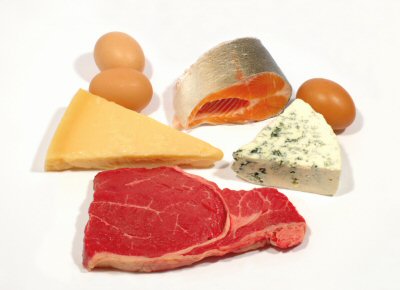 source of proteins
source of proteins

Why did we discard sugar?
The BIBIC programme according to which we are working and practicing with our girl is a comprehensive one. Besides therapeutic activities, it consists of the nutrition system too. We have received an advice there to discard sugar urgently and definitely, because it creates an energy chaos in an organism, and serious addiction. How is it manifested? When a child gets tired, he/she needs a larger dose of sugar (chocolate, cake, biscuit, sweet juice...) to recover, but this recovery is not uniform (rectilinear), it goes up and down. After taking sweets, there is a high energy jump, which exhausts an organism (burns down), so it sinks and demands sugar again, and so on round and round. Sugar also causes sleeping disorder, teeth damage and weakens immune system. Sugar makes an organism satiated, so a child consumes less quality food, such as vegetable, fruit, fish. Besides all those bad features, it is virtually of no importance for an organism. We CAN MANAGE without it!
Instead of factory produced and bleached sugar crystals, which, due to processing methods, do not have any nutritional values (except pure calories), it is much useful to take fruit sugar from sweet fruits in their natural state. Fruits can be tastily prepared such as stewed fruit, fruit salad covered with rice syrup (definitely not chocolate or sugar!!!!), minced fruit or jam without sweeteners. Believe me, all that is much tastier and children and parents can easily adapt to this sort of food. Some kings of fruit that have sweet taste can be cooked in little amount of water and this mass can be used instead of sugar tor make a healthy domestic cakes.
Sugars can be categorized as either simple or complex depending on their chemical structure. Most of the simple sugars have high glycemic index. There are 4 classes of simple sugars which are regarded by most nutritionists as "harmful" to the health: sucrose, fructose, honey, and malts. Complex sugars have low glycemic index and they have good effect on our health. Sweeteners made from the complex sugars that we use are: RICE SYRUP, malted cereal syrup and cooked fruit. They are slowly absorbed by the digestive tract and they give small amount of energy to the body all day long. That means a long lasting energy level for Dejana.
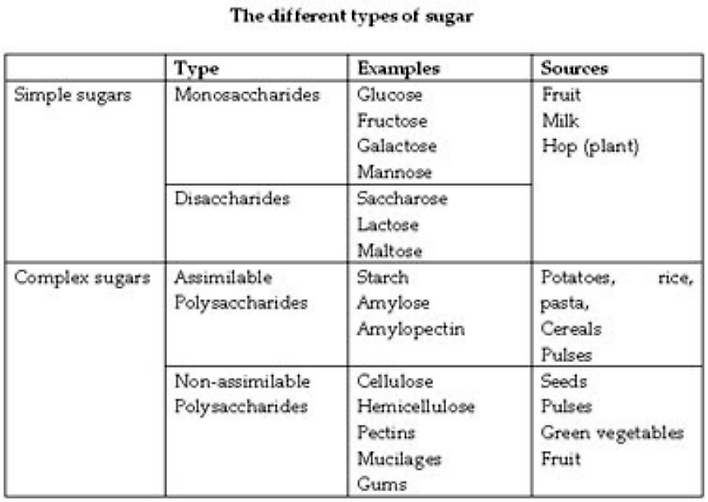
Attention
Much worse than sugar are artificial sweeteners: acesulfame potassium, aspartame, cyclamic acid, saccharin and sucralose, splenda. My advice is: Try to avoid buying any product that contains them in even smallest quantities because of their bed affect on the health.
OUR MENU
We have also been advised to buy brown bread rather than white, because it is more nutritious and more pleasant when digested. Children should drink much liquid and they should get it whenever they ask for it (it does not count as food). Juices should be naturally made, filtered, but not from powder with artificial aroma. We have also discarded from our menu: pizza, ice-cream, hamburgers, and other "popular food" so called: junk food, and we all slowly got used to it. Honestly!!!
First of all: take that kind of food OUT OF YOUR MENU as soon as possible

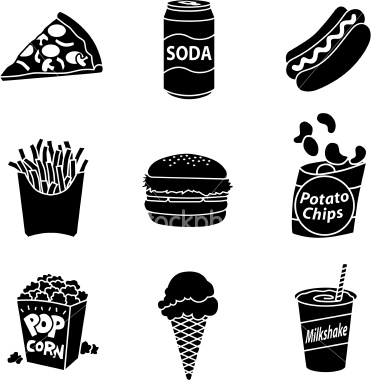
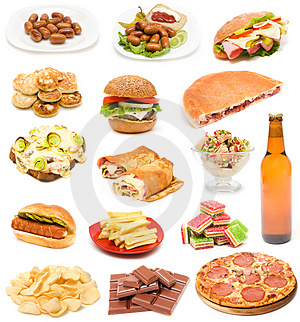
Since our daughter has not eaten sugar, she managed to fatten up, which made us happy as she had been very skinny before. There are no large daily energy ups and downs, she can do more, she is more active and sleeps well, what is very important for our program.
Myth about caloric meals in Rett syndrome:
Because girls with Classical Rett syndrome are many times to skinny it was advised to their parents to give them high caloric meals that included: milkshakes, ice creams, cakes, chocolate etc. Nothing is more wrong than that. This kind of food is caloric, but besides that it contains nothing els than sugar. But our body needs nutritions that will support it's cells to function in healthy way. We have to give skinny girls much proteins, minerals, vitamins and carbohydrates and just to forget that fanny story about the calories.
We have divided meals into three main courses, always served at the same time, and two snacks consisting only fruit and vegetables (in the beginning). In the morning, we give soft fruit (banana which is full of calories, mandarin, peach, strawberries...) which stimulates her to swallow better the dribbling liquid when chewing. In the afternoon, we give her hard fruit (shopped apples, pear, carrot, radish) so as to stimulate her to bite and do motor exercises of her mouth. After a while we noticed that Dejana had not always good energy balance. She was in a longer periods of time less active, more tired and less concentrated. When we discussed that subject with the nutritionist by BIBIC she concluded that it has to do with her eating patron. They advised us to give her more proteins in the time of snacks and in the morning. This meant that we added a small peace of cooked meat to her breakfast and in the afternoon with fruit. Instead of meet it is possible to add a rice waffle, pinnate butter, fish, or kooked bones, all in very small quantity. They give a lot of energy but in long lasting way. It worked excellent for Dejana and we use that patron of eating each time that she needs it. When her energy stabilizes we do stop adding more proteins to her menu.
To conclude: Dejana eating patron is dynamic and depends of her dally needs.
The three main meals are served within 20 to 30 minutes and then the meal is finished. We do take a way all what she did not eat. There are no more meals between them!!! That is important because a child will soon learn to eat more food at the main meals when she becomes hungry. She will have some problems in the beginning but very soon her daily rythm will be established and she will benefit from it. We too! It is also not good for a child's organism to be given to eat incessantly all day long. It is better to teach her to take a large and nutritious meal at a fixed time, and in that way create and establish a DAILY RHYTHM, which is disturbed in disorder as Rett syndrome. This is also effecting a quality of sleeping and what is the most important: IT FUNCTIONS!
Every meal must contain three things: vitamins and minerals, proteins and carbon hydrates. Proteins could be offered in the form of: chunk of cheese, eggs, fish, meat... by choice! It is also important that one of the meals has to be: warm and versatile. We have determined meals for each day: with rice, potatoes, pasta (spaghetti, macaroni, noodles), beans and leguminous plants (broad bean). That means, different basic supplement every day with obligatory vegetables and piece of meat, and we give her fish three times a week. I also use soy in preparing meals, but that is a matter of taste! Dejana does not eat chocolate as well, you do not have to feel sorry for that. She is happy to get fresh fruit or resins like other children are exiting for cakes and candies. It is all matter of habit and our old prejudices.
Dejana is healthy, she has catches very number of colds, she does all planed activities every day without exception, has not constipation, sleeps normal, has good weight and she grows in hight according to her peer level (12 years now).
RELATED
RESEARCH
To avoid these problems we started from the very beginning to take care about:
- 1- good nutritional supplements
2- healthy food (without added sucker, artificial colors, trans fat and milk products}
3- much physical activities
4- no medication
In shops, we can also find supplements which represent concentrated doses of vitamin C (we use it too), or increased doses of vitamin B, among which B6 and B12 have particularly important role in functioning of nerve cells and conducting of information through neurons. If you want to buy vitamin C (ascorbic acid) you can better buy it in a form of Sodium Ascorbate. Mineral salts of ascorbic acid (mineral ascorbates) are buffered and therefore less acidic. Thus, mineral ascorbates are often recommended to people who experience gastrointestinal problems (abdominal pain or diarrhea). Vitamin C (Sodium Ascorbate) is less irritating to the gastrointestinal tract. When mineral salts of ascorbic acid are taken, both the ascorbic acid and the mineral appear to be well-absorbed.We had lots of trouble to find it. Eventually, we have got it from England. It is specially made for children and is used to improve immunity of the children who often have cold, flu and other illnesses. If an organism accepts this vitamin well, a child can pass the whole winter without a single cold. It is also important to say that vitamin C should not be used in tablets, but in drops added to a glass of fruit juice, as it is more favorable for the mucous membrane of the stomach when used dissolved.
Some of the supplements contain concentration of different plant and fish Omega 3 oil, (also very important for the brain functioning), and can be found in combination with several minerals and vitamins which complements each other during the absorption. The supplements are very useful, but one must be VERY CAREFUL since this sort of tablet "food" became a very effective business of many companies and a way how to make a easy profit. Therefore, we can also find on the market some supplements which do not consist of what is written on the box, so they are not efficient, but there are also those consisting of some synthetic substances and aromas, and they are HARMFUL!!! As a rule, a good supplement is always expensive and that is what makes it different from those cheap; commercial; variants. Knowing that, my advice is to choose them in consultation with your dietitian and buy them at the pharmacy or through Internet, directly from the manufacturer who can guarantee the quality. By no means should you buy them through middlemen, or through dealers in private shops. The child's health is in question and no one should take a risk and calculate with a price.
The manufacturer I would particularly recommend is Kirkman's Lab in USA, and I think they have recently opened a European wing in England. You can find their website at: kirkmanlabs
We have been ordering supplements from them for three years and they have been of a good quality, tasty and specially made for CHILDREN of different needs. Most of them consist of natural fruit additives, or they are tasteless, so that children can accept them easier than common vitamin tablets or powder made for adults.
What we are using at the moment is a liquid supplement with all necessary vitamins and MINERALS for a daily use, in respective doses (percentages). We are also using fish oil – particularly MCT preparation, but instead, it would be sufficient for a child to eat one of fatty fish (sardine, tuna, salmon) as a complete meal, at least three times a week and in regular intervals. Dejana also gets Calma C supplement that contains: calcium, magnesium and vitamin C. This product was recommended by BIBIC because it is well known that the bones of girls with Classical Rett syndrome are weak and have deficit of calcium. This mineral is often combined with magnesium because it is better absorbed in this way. Here are Dejana's daily supplements:



In addition to this, Rett girls are often given L-carnitine, a supplement which has an influence on better concentration, energy level and heart functioning, but we have not noticed any significant improvement with our daughter, so we stopped using it in the very beginning. However, some parents have noticed a small progress, and because Rett children are different as anybody else, the components of supplements can have different effects on them.
In the beginning, we also tried a tablets with higher concentration of B6+B12+magnesium. Vitamins B has been always produced in combination with magnesium, because that is how they bind in the organism, since magnesium helps better absorption of B12. It seemd to us that it caped her energy level very well and it helped her do all the activities during the day much easier. But we stopped with it at some time as she become stronger and activer on her own.
Some Rett girls are getting Q10. But the benefits of it are very individual. What is in general important with the supplements is: that they do NOT contain artificial aromas, additives with E-numbers, and that their make is based on natural materials (although today it is difficult to avoid it even in ordinary food). You can inform about it all by the manufacture, on the forums, or by dietitians and of course you may always check ingredients before using them.
HOW TO CHOOSE A SUPPLEMENT?
The best thing is to address a experienced nutritionist first and talk to him about everything: ask him about the quality of supplements, about their effects, combination and brand. In addition to seeing a doctor, it is not a bad thing to do the blood test to allergy on food, and it is advisory to investigate which nutritional ingredients your child lacks and whether she has got too much of some oxidants (adverse to organism). We did an allergy test first and found Dejana was not allergic to any substance in food. Then we ran the additional test to heavy metals (poisonous and undesirable in organism) at the Great Plains Laboratory in the USA. Upon your request, they send you all necessary test material, and after some time they send you the list of complete analyses in writing, which you can bring to your physician. We did the test on the hair tuft sample, and we received the results by which our daughter had all the vitamins and minerals just UNDER the bottom level (minimum) necessary for the organism: that means insufficient quantity, and that is probably why the vitamin supplement with minerals has suited her fine. Hereunder, you will find more about the test: greatplainslaboratory
You can find something more about it all on the following website: greatplains_test
On the following address, you can choose and order (urine, blood, hair analysis): greatplains_ordertest
Upon establishing what your child lacks in nutrition and which supplements are of a good quality, your choice will not be difficult. I would also like to add that you should avoid hormone based supplements. There are doctors who prescribe to extremely weak Rett syndrome children with thin legs and arms, various kinds of anabolic steroids to make muscles grow. However, I would never accept to use such means, because hormones are not researched extensively and nobody knows what the consequences are after having been affected. There are even reports which say some of the steroids are cancerous (those used as a doping in a sport). That is why everything that is made naturally, without synthetic substances, without additives and artificial aromas, and without affecting hormones, is always the SAFEST for the use and for the supplement to food.
One tip: I will recommend to all parents to use possibilities of Internet to get better over view on the supplements that are used world wide in the Rett society and to get insight in the new products. Internet can also help parents to come in contact with each other and to exchange the experience about things that work or do not work. It is important to do that for two reasons:
- some
of the local (regional) dietitians/ physicians do not know enough
about Rett syndrome and do not follow the latest research in that
field. Their advice, there for can be not the best possible. If the
parents find a good articles on the Internet they can always discus
it with their own doctor or find a new one that is more open for the
latest research and products.
- many countries in the world have adopted/imported limited number of products as a contract with the companies that want to have monopole in their areas. There for dietitians/ physicians will recommend only their products to the patients. But parents can maybe find on the Internet much better supplements that are more suitable for their child and order it on line. Of course they can discus it all with own dietitian. In fact they can be independent of the lokal pharmaceutic market production in the interest of own child.
NATURAL FOOD
We have been on a special diet which understands food: fully without sugar, additives, artificial colors and preservatives. That means without E-numbers.
Since every packaging bears the composition of a product, then it is not difficult to choose food and juices without the above said substances. In the Netherlands it is not a problem to keep such a diet, as there are special shops of Healthy Food whose articles do not consist of E-numbers at all, and one can even buy tasty biscuits and cakes without a trace of sugar. If there are no such shops, one can find nice recipes for the cakes based on RICE SYRUP, or fruit sweets, without adding sugar and artificial aromas/colors in dough and fill.

 source of proteins
source of proteins

Why did we discard sugar?
The BIBIC programme according to which we are working and practicing with our girl is a comprehensive one. Besides therapeutic activities, it consists of the nutrition system too. We have received an advice there to discard sugar urgently and definitely, because it creates an energy chaos in an organism, and serious addiction. How is it manifested? When a child gets tired, he/she needs a larger dose of sugar (chocolate, cake, biscuit, sweet juice...) to recover, but this recovery is not uniform (rectilinear), it goes up and down. After taking sweets, there is a high energy jump, which exhausts an organism (burns down), so it sinks and demands sugar again, and so on round and round. Sugar also causes sleeping disorder, teeth damage and weakens immune system. Sugar makes an organism satiated, so a child consumes less quality food, such as vegetable, fruit, fish. Besides all those bad features, it is virtually of no importance for an organism. We CAN MANAGE without it!
Instead of factory produced and bleached sugar crystals, which, due to processing methods, do not have any nutritional values (except pure calories), it is much useful to take fruit sugar from sweet fruits in their natural state. Fruits can be tastily prepared such as stewed fruit, fruit salad covered with rice syrup (definitely not chocolate or sugar!!!!), minced fruit or jam without sweeteners. Believe me, all that is much tastier and children and parents can easily adapt to this sort of food. Some kings of fruit that have sweet taste can be cooked in little amount of water and this mass can be used instead of sugar tor make a healthy domestic cakes.
Sugars can be categorized as either simple or complex depending on their chemical structure. Most of the simple sugars have high glycemic index. There are 4 classes of simple sugars which are regarded by most nutritionists as "harmful" to the health: sucrose, fructose, honey, and malts. Complex sugars have low glycemic index and they have good effect on our health. Sweeteners made from the complex sugars that we use are: RICE SYRUP, malted cereal syrup and cooked fruit. They are slowly absorbed by the digestive tract and they give small amount of energy to the body all day long. That means a long lasting energy level for Dejana.

Attention
Much worse than sugar are artificial sweeteners: acesulfame potassium, aspartame, cyclamic acid, saccharin and sucralose, splenda. My advice is: Try to avoid buying any product that contains them in even smallest quantities because of their bed affect on the health.
OUR MENU
We have also been advised to buy brown bread rather than white, because it is more nutritious and more pleasant when digested. Children should drink much liquid and they should get it whenever they ask for it (it does not count as food). Juices should be naturally made, filtered, but not from powder with artificial aroma. We have also discarded from our menu: pizza, ice-cream, hamburgers, and other "popular food" so called: junk food, and we all slowly got used to it. Honestly!!!
First of all: take that kind of food OUT OF YOUR MENU as soon as possible



Since our daughter has not eaten sugar, she managed to fatten up, which made us happy as she had been very skinny before. There are no large daily energy ups and downs, she can do more, she is more active and sleeps well, what is very important for our program.
Myth about caloric meals in Rett syndrome:
Because girls with Classical Rett syndrome are many times to skinny it was advised to their parents to give them high caloric meals that included: milkshakes, ice creams, cakes, chocolate etc. Nothing is more wrong than that. This kind of food is caloric, but besides that it contains nothing els than sugar. But our body needs nutritions that will support it's cells to function in healthy way. We have to give skinny girls much proteins, minerals, vitamins and carbohydrates and just to forget that fanny story about the calories.
We have divided meals into three main courses, always served at the same time, and two snacks consisting only fruit and vegetables (in the beginning). In the morning, we give soft fruit (banana which is full of calories, mandarin, peach, strawberries...) which stimulates her to swallow better the dribbling liquid when chewing. In the afternoon, we give her hard fruit (shopped apples, pear, carrot, radish) so as to stimulate her to bite and do motor exercises of her mouth. After a while we noticed that Dejana had not always good energy balance. She was in a longer periods of time less active, more tired and less concentrated. When we discussed that subject with the nutritionist by BIBIC she concluded that it has to do with her eating patron. They advised us to give her more proteins in the time of snacks and in the morning. This meant that we added a small peace of cooked meat to her breakfast and in the afternoon with fruit. Instead of meet it is possible to add a rice waffle, pinnate butter, fish, or kooked bones, all in very small quantity. They give a lot of energy but in long lasting way. It worked excellent for Dejana and we use that patron of eating each time that she needs it. When her energy stabilizes we do stop adding more proteins to her menu.
To conclude: Dejana eating patron is dynamic and depends of her dally needs.
The three main meals are served within 20 to 30 minutes and then the meal is finished. We do take a way all what she did not eat. There are no more meals between them!!! That is important because a child will soon learn to eat more food at the main meals when she becomes hungry. She will have some problems in the beginning but very soon her daily rythm will be established and she will benefit from it. We too! It is also not good for a child's organism to be given to eat incessantly all day long. It is better to teach her to take a large and nutritious meal at a fixed time, and in that way create and establish a DAILY RHYTHM, which is disturbed in disorder as Rett syndrome. This is also effecting a quality of sleeping and what is the most important: IT FUNCTIONS!
Every meal must contain three things: vitamins and minerals, proteins and carbon hydrates. Proteins could be offered in the form of: chunk of cheese, eggs, fish, meat... by choice! It is also important that one of the meals has to be: warm and versatile. We have determined meals for each day: with rice, potatoes, pasta (spaghetti, macaroni, noodles), beans and leguminous plants (broad bean). That means, different basic supplement every day with obligatory vegetables and piece of meat, and we give her fish three times a week. I also use soy in preparing meals, but that is a matter of taste! Dejana does not eat chocolate as well, you do not have to feel sorry for that. She is happy to get fresh fruit or resins like other children are exiting for cakes and candies. It is all matter of habit and our old prejudices.
Dejana is healthy, she has catches very number of colds, she does all planed activities every day without exception, has not constipation, sleeps normal, has good weight and she grows in hight according to her peer level (12 years now).
|
Nutrition
and gastrointestinal disorders in Rett syndrome: Importance of early intervention Prior C, Nunes A, Rios M, Sequeiros J, Maciel P, Gomes L, Temudo T. Serviço de Pediatria, Hospital de Santo António, Porto, Portugal. ___ OBJECTIVES: Feeding difficulties and digestive disturbances are common in patients with neurological disorders, particularly Rett syndrome. They may compromise weight and growth, often leading to malnutrition. The aim of the present study was to characterize the nutritional and gastrointestinal status of a group of children with Rett syndrome and to evaluate the benefits of clinical intervention. ___ METHODS: Based on a previously designed protocol, the authors performed gastrointestinal and nutritional assessment of 25 girls with Rett syndrome with identified MECP2 mutation. Intervention was performed individually and a subsequent evaluation involved 7 patients. ___ RESULTS: Feeding problems were present in 11 patients (44%), and only one had partial self-feeding ability. Body mass index (BMI) was under the 5th percentile in 40%. Constipation (75%) and gastroesophageal reflux (32%) were the main gastrointestinal problems. Iron deficient anemia was present in 12% and iron deficiency/low ferritin in another 12%. Hypocalcemia occurred in 44%. After therapeutic intervention all the girls re-evaluated showed improvements in BMI, constipation and gastroesophageal reflux symptoms. CONCLUSIONS: Management of patients with Rett syndrome requires a multidisciplinary team that should include Gastroenterologists. Individually tailored feeding strategies are essential to provide adequate nutrition. Early identification of nutritional and gastrointestinal disturbances and their proper management contribute to the improvement in the quality of life of these patients. Improvement in motor and exploratory behavior in Rett syndrome mice with restricted ketogenic and standard diets Mantis JG, Fritz CL, Marsh J, Heinrichs SC, Seyfried TN. Biology Department, Boston College, Chestnut Hill, MA 02467, USA. Rett syndrome (RTT) is a rare X-linked autistic-spectrum neurological disorder associated with impaired energy metabolism, seizure susceptibility, progressive social behavioral regression, and motor impairment primarily in young girls. The objective of this study was to examine the influence of restricted diets, including a ketogenic diet (KD) and a standard rodent chow diet (SD), on behavior in male Mecp2(308/y) mice, a model of RTT. The KD is a high-fat, low-carbohydrate diet that has anticonvulsant efficacy in children with intractable epilepsy and may be therapeutic in children with RTT. Following an 11-day pretrial period, adult wild-type and mutant Rett mice were separated into groups that were fed either an SD in unrestricted or restricted amounts or a ketogenic diet (KetoCal) in restricted amounts for a total of 30 days. The restricted diets were administered to reduce mouse body weight by 20-23% compared to the body weight of each mouse before the initiation of the diet. All mice were subjected to a battery of behavioral tests to determine the influence of the diet on the RTT phenotype. We found that performance in tests of motor behavior and anxiety was significantly worse in male RTT mice compared to wild-type mice and that restriction of either the KD or the SD improved motor behavior and reduced anxiety. We conclude that although both restricted diets increased the tendency of Rett mice to explore a novel environment, the beneficial effects of the KD were due more to calorie restriction than to the composition of the diet.Our findings suggest that caloric ally restricted diets could be effective in reducing the anxiety and in improving motor behavior in girls with RTT. Growth and nutrition in 10 girls with Rett syndrome Thommessen M, Kase BF, Heiberg A. Institute for Nutrition Research, School of Medicine, University of Oslo, Norway. Cross-sectional and retrospective data on growth and anthropometric outcome, feeding problems and dietary intake are presented for 10 girls between three and 16 years of age with Rett syndrome. All girls had birth weight and length within the normal range for gestational age and development was considered normal until six to 24 months of age. The girls presented a fall off in linear growth during the first two years of life and at the time of study, all but one had height and/or weight for height below the 2.5th percentile of healthy children. The girls had good appetite but could not eat by themselves and oral-motor dysfunctions were common. The mean energy intake was 66.9% of the US recommendations according to age and 107.8% of the recommendations according to body weight. The intakes of thiamine, vitamin D, calcium and iron were considered low. None was anemic. Different nutritional intervention strategies should be investigated to reduce and, if possible, prevent malnutrition and wasting in girls with Rett syndrome. Eating practices, nutritional status and constipation in patients with Rett syndrome Schwartzman F, Vítolo MR, Schwartzman JS, Morais MB. Post Graduation Course on Nutrition, Federal University of São Paulo, Paulista School of Medicine, São Paulo, SP, Brasil. BACKGROUND: Disturbance in chewing, swallowing and digestive motility may predispose to feeding and nutritional abnormalities in patients with Rett syndrome. OBJECTIVE: To evaluate the dietary habits, nutritional status and the prevalence of constipation in patients with classical Rett syndrome. METHODS: Twenty seven female patients between the ages of 2.6 and 21.8 years were studied. The following parameters were evaluated: food register, weight, height and intestinal movement characteristics. Weight and height were compared with the National Center for Health Statistics standards. RESULTS: The inability to ingest solid foods was observed in 80.8% of the patients. A height-to-age deficit was observed in 13 (48.1%) of the girls, being more intense in patients at stage IV. Weight-for-height deficit was found in 10 (37.0%) patients, 15 (55.6%) showed normal weight and 2 (7.4%) were overweight for their height. The median ingestion of energy, according to weight-for-height, was equal to 106.6%. Insufficient iron ingestion was observed in 63.0% and insufficient calcium in 55.6% of the patients. Constipation was verified in 74.1% of the patients and did not show a relationship with the quantity of fiber in the diet. CONCLUSION: Various nutritional problems, as well as, intestinal constipation were observed in these patients with Rett syndrome, and they must be considered in the multidisciplinary therapeutic planning of these individuals. |